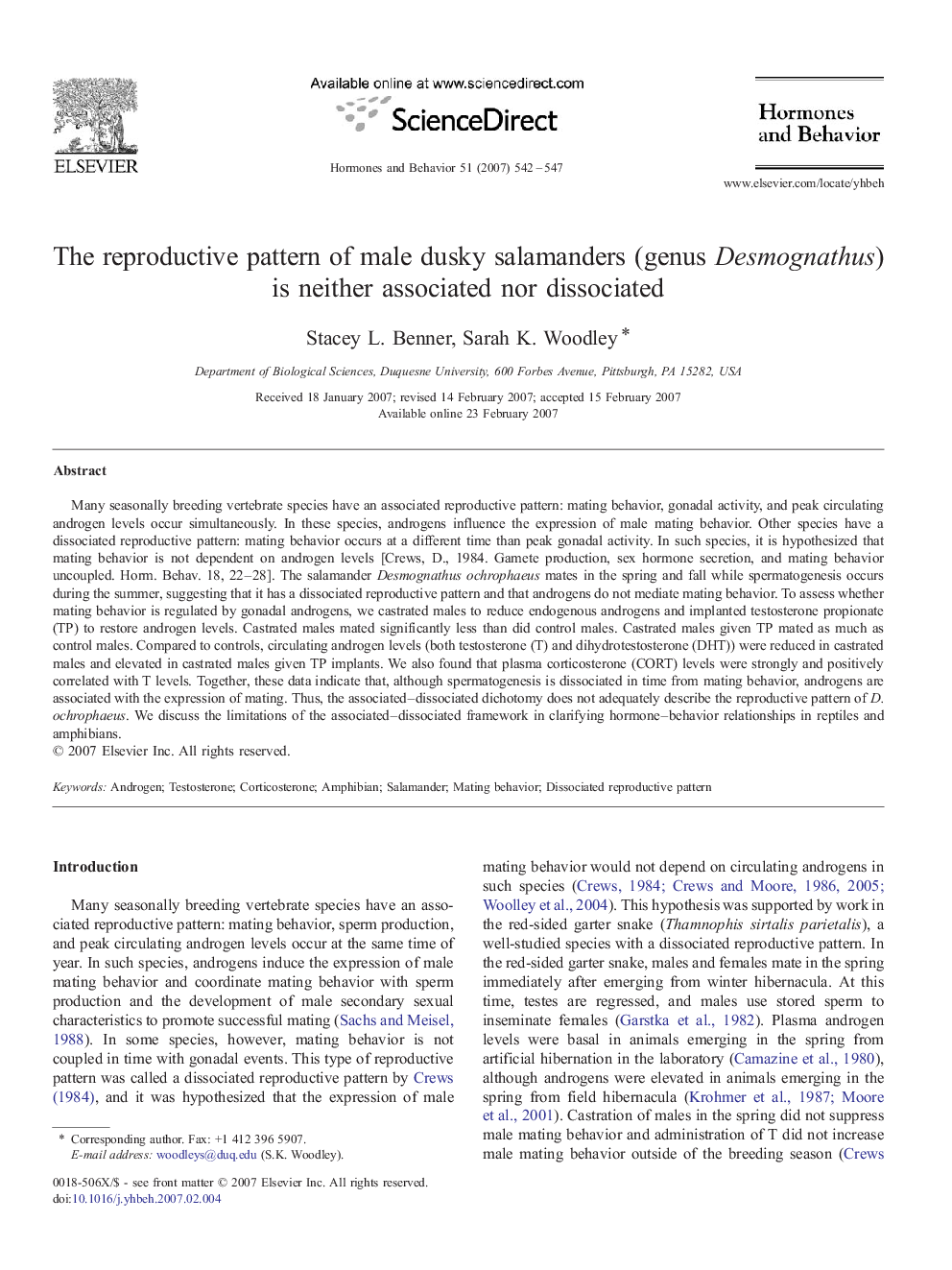| کد مقاله | کد نشریه | سال انتشار | مقاله انگلیسی | نسخه تمام متن |
|---|---|---|---|---|
| 323822 | 540796 | 2007 | 6 صفحه PDF | دانلود رایگان |

Many seasonally breeding vertebrate species have an associated reproductive pattern: mating behavior, gonadal activity, and peak circulating androgen levels occur simultaneously. In these species, androgens influence the expression of male mating behavior. Other species have a dissociated reproductive pattern: mating behavior occurs at a different time than peak gonadal activity. In such species, it is hypothesized that mating behavior is not dependent on androgen levels [Crews, D., 1984. Gamete production, sex hormone secretion, and mating behavior uncoupled. Horm. Behav. 18, 22–28]. The salamander Desmognathus ochrophaeus mates in the spring and fall while spermatogenesis occurs during the summer, suggesting that it has a dissociated reproductive pattern and that androgens do not mediate mating behavior. To assess whether mating behavior is regulated by gonadal androgens, we castrated males to reduce endogenous androgens and implanted testosterone propionate (TP) to restore androgen levels. Castrated males mated significantly less than did control males. Castrated males given TP mated as much as control males. Compared to controls, circulating androgen levels (both testosterone (T) and dihydrotestosterone (DHT)) were reduced in castrated males and elevated in castrated males given TP implants. We also found that plasma corticosterone (CORT) levels were strongly and positively correlated with T levels. Together, these data indicate that, although spermatogenesis is dissociated in time from mating behavior, androgens are associated with the expression of mating. Thus, the associated–dissociated dichotomy does not adequately describe the reproductive pattern of D. ochrophaeus. We discuss the limitations of the associated–dissociated framework in clarifying hormone–behavior relationships in reptiles and amphibians.
Journal: Hormones and Behavior - Volume 51, Issue 4, April 2007, Pages 542–547